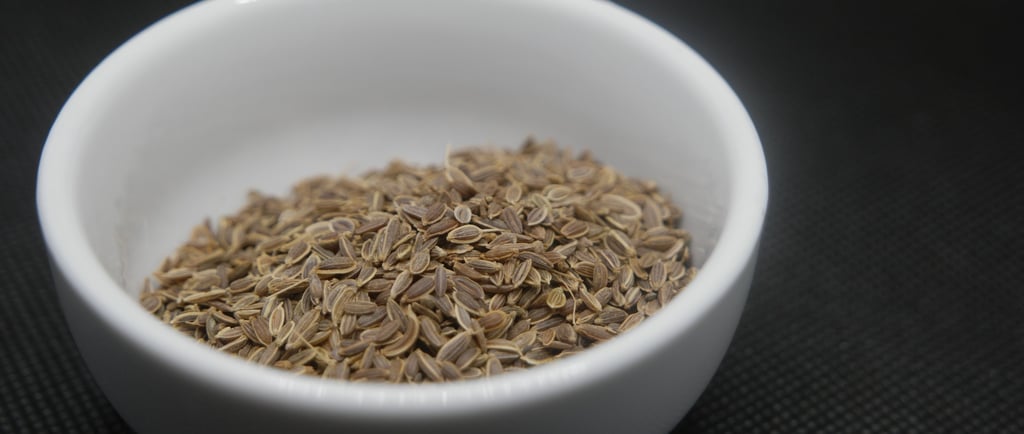The Versatile Dill Seed: From Garden to Gourmet
EMBRACING SPICES
Bethany
4/21/20254 min read


Where Dill Seed is Grown
Dill seed, known for its aromatic properties and culinary versatility, is cultivated predominantly in temperate climates around the world. This herbaceous annual thrives in well-drained soils that receive ample sunlight, making specific regions more favourable for its growth. Notably, Eastern Europe is one of the primary areas where dill seed is extensively grown, particularly in countries like Poland and Russia. These regions benefit from a climate that allows for optimal seed development, contributing to the high-quality produce available in the market.
In North America, dill seed is commonly cultivated in the United States and Canada. States such as California and Michigan present the perfect blend of soil quality and climatic conditions necessary for successful dill seed cultivation. Here, farmers often engage in practices that maximise yield, such as rotating crops and enriching the soil with organic matter. Additionally, Asia, especially countries like India and Turkey, has also emerged as significant producers of dill seed. The warm climates and diverse growing conditions in these regions provide an ideal environment for the herb to flourish.
Harvesting dill seed typically occurs when the flowers have matured and turned brown, signalling that the seeds are ready for collection. It is crucial to monitor the growth closely, as delaying harvest can lead to seed drop, resulting in loss and reduced yield. To ensure a bountiful harvest, agricultural practices such as timely irrigation, pest control, and appropriate fertilisation techniques must be adopted. These combined efforts contribute to the successful cultivation of dill seed, ensuring it retains its strong flavour and valuable properties that are cherished in both home cooking and gourmet dishes.
Culinary Uses of Dill Seed
Dill seed is a versatile spice that offers an array of culinary applications in various cuisines. Renowned for its unique aromatic profile, dill seed possesses a distinctive anise-like flavour and a slightly bitter undertone, making it an intriguing addition to both traditional and contemporary dishes. Among its most famous uses, dill seed enhances seafood and meat preparations. For example, it can be sprinkled over grilled fish or infused into marinades for meats, providing a refreshing zest that elevates the overall taste. The integration of dill seed in these recipes not only enhances flavour but also contributes a visually appealing attribute to the dish.
In addition to being used for meat purposes, dill seed is a key ingredient in pickling brines. When combined with vinegar, water, and other spices, dill seed serves to flavour cucumbers and other vegetables, resulting in tangy, crunchy pickles. This application highlights the seed's ability to complement and preserve flavours effectively. Furthermore, dill seed can also be utilised in salads, where it can be mixed into dressings or sprinkled over fresh greens to introduce a delightful twist.
For those looking to enhance their culinary creations with dill seed, several preparation tips are worth considering. Toasting the seeds lightly in a dry skillet for a few minutes can significantly amplify their flavour, adding a warm, nutty essence. Additionally, grinding the seeds to a finer consistency can release essential oils, intensifying their taste and aroma in various recipes. Incorporating dill seed into cooking is a simple yet effective way to explore new flavour dimensions and enrich numerous dishes.
Cuisines That Use Dill Seed
Dill seed is a celebrated component in various culinary traditions globally, reflecting its versatility and distinct flavour profile. One of the most notable regions incorporating dill seed into their gastronomy is Scandinavia. In this area, dill is often used to enhance the taste of seafood dishes, particularly in pickling recipes, where it adds a refreshing note that balances the brininess of fish. Classic Scandinavian recipes frequently include dill seeds in gravlax, a dish featuring cured salmon, and in traditional herring preparations, showcasing how integral they are to local flavours.
Eastern European cuisines also prominently feature dill seed. In countries such as Russia and Poland, dill is an essential herb, often used in soups, stews, and potato dishes. Dill seed is commonly added to borscht, where its slightly sweet and tangy undertones elevate the flavour profile of this beetroot soup. Additionally, dill seed is sought after in making fermented pickles, where it infuses its characteristic musty, slightly bittersweet flavour into cucumbers. The use of dill seed in these varieties highlights the herb’s role as a flavourful counterpart to the robust ingredients that define Eastern European cooking.
Middle Eastern dishes further showcase the use of dill seed, where it often finds its way into spice blends and sauces. For example, za'atar, a popular spice mix in many Middle Eastern cuisines, frequently includes dill seed among its ingredients, contributing a unique zest to meats and vegetables. Moreover, dill seeds are sometimes incorporated into rice dishes and salads, adding a subtle anise-like flavour. Beyond their culinary applications, many cultures recognise the medicinal properties of dill seed, using it in herbal remedies to aid digestion and promote overall well-being. This multi-faceted use of dill seed emphasises its importance across various regions and highlights the rich tapestry of flavours it brings to numerous dishes.
Nutritional Benefits and Uses of Dill Seed
Dill seed, derived from the dill plant (Anethum graveolens), is not only a flavourful addition to various culinary dishes but also a powerhouse of nutritional benefits. These small, oval seeds are rich in essential vitamins and minerals. For instance, dill seeds contain significant amounts of vitamins A and C, which are vital for maintaining healthy skin and vision, as well as boosting immune function. Furthermore, they are a good source of minerals such as manganese, calcium, and iron, which play crucial roles in bone health, metabolic processes, and red blood cell production.
In addition to their nutrient content, dill seeds possess noteworthy antioxidant properties. This is primarily attributed to their phytochemical compounds, which help combat oxidative stress and may lower the risk of chronic diseases. Antioxidants are essential in neutralising free radicals in the body, contributing to overall health and well-being.
Traditionally, dill seeds have been utilised in herbal medicine for their therapeutic effects. One of the most recognised uses is their ability to aid digestion; dill seeds can help reduce bloating and gas and improve overall gastrointestinal health. Additionally, they have been known to promote respiratory health by acting as an expectorant, which can help alleviate symptoms of cough and congestion.
To incorporate dill seed into your diet as a herbal remedy, they can be brewed into a tasty tea. Simply steep a teaspoon of crushed dill seeds in hot water for about 10 minutes. This tea not only provides potential health benefits but offers a unique flavour profile. Additionally, dill seeds can be added to salads, pickles, and soups, seamlessly integrating wellness with culinary delight. By incorporating dill seeds into your diet, you can enjoy their rich flavour while reaping the nutritional and medicinal benefits they have to offer.

